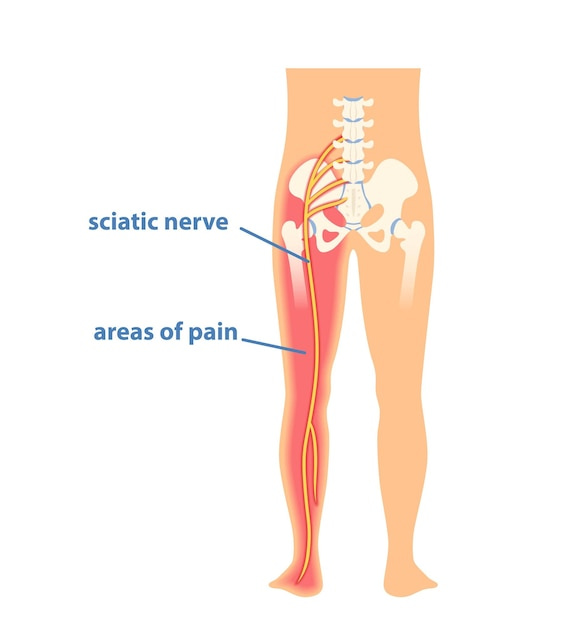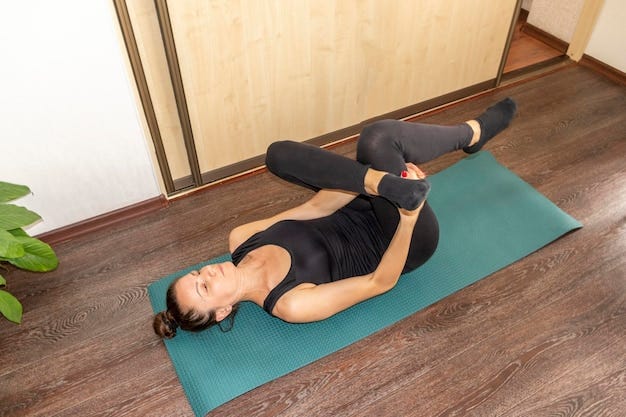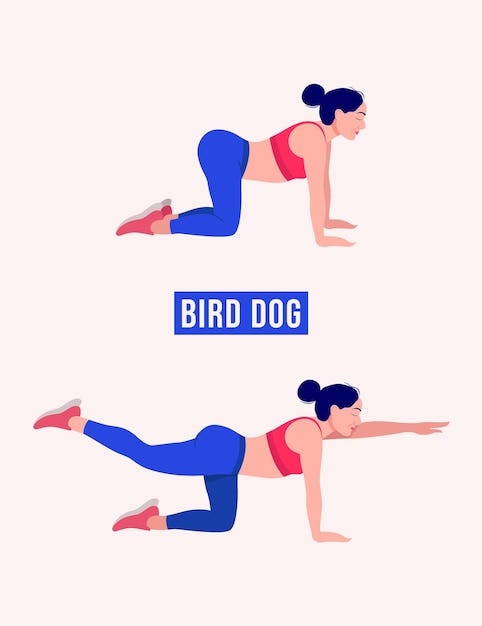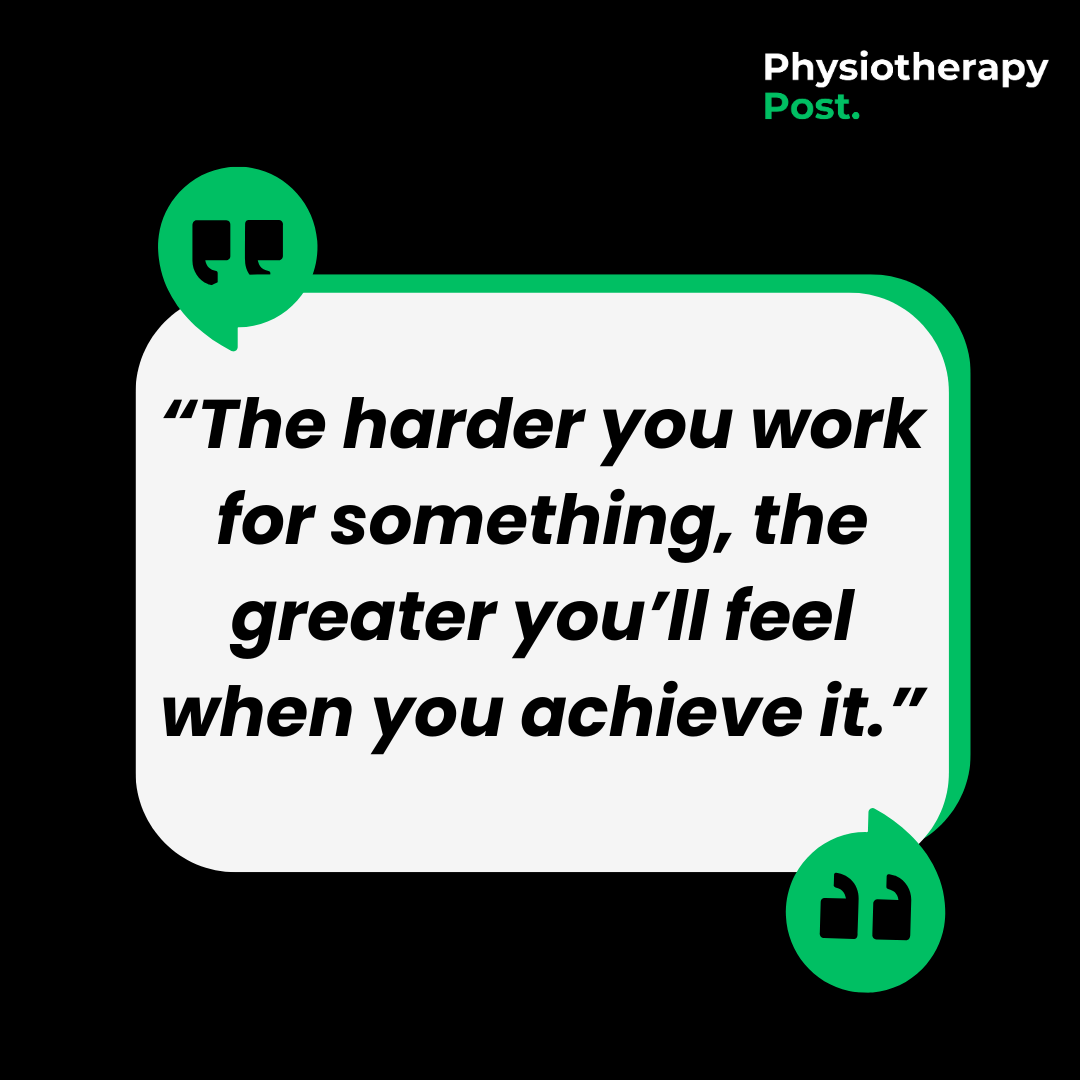Sciatica Simplified: Alleviating Nerve Pain with Targeted Exercises
Physiotherapy Post | Vol. 2, Issue 52 | November 2024
Dear Readers,
Welcome to this issue of Physiotherapy Post!
In this edition, we’re diving into the world of sciatica, a condition that affects millions globally and can disrupt daily life with its sharp, radiating nerve pain. While sciatica might seem overwhelming, the good news is that targeted physiotherapy exercises offer an effective, non-invasive path to relief.
Our feature, "Sciatica Simplified: Alleviating Nerve Pain with Targeted Exercises," sheds light on the causes of sciatica, the role of physiotherapy in managing it, and the evidence-based exercises that can help you or your patients reclaim mobility and comfort. From understanding the root of the pain to learning actionable solutions, this article is your guide to navigating sciatica with confidence.
Whether you're a physiotherapist seeking advanced insights, a patient looking for relief, or simply someone interested in proactive health strategies, we’ve got something valuable for you.
Let’s simplify sciatica and pave the way to a pain-free life together.
Warm regards,
Dr. Aditi Singh, PhD
Editor, Physiotherapy Post
Sciatica, a common condition characterized by pain radiating along the sciatic nerve's pathway, affects millions of people worldwide. Often caused by compression or irritation of the sciatic nerve, this condition can lead to significant discomfort and reduced quality of life. Fortunately, targeted physiotherapy exercises have emerged as an effective non-invasive solution to manage and alleviate sciatic nerve pain.
Understanding Sciatica
The sciatic nerve, the largest nerve in the body, runs from the lower back through the hips and down each leg. Sciatica occurs when this nerve becomes irritated or compressed, often due to:
Herniated lumbar discs
Spinal stenosis
Piriformis syndrome
Spondylolisthesis
Symptoms include sharp pain, numbness, tingling, or weakness along the nerve's pathway. These symptoms can significantly impair daily activities, emphasizing the need for effective interventions.
The Role of Physiotherapy in Sciatica Management
Physiotherapy focuses on addressing the underlying causes of sciatic nerve pain through movement therapy, strengthening exercises, and postural corrections. Research highlights its effectiveness in reducing pain, improving function, and preventing recurrence.
Key benefits of physiotherapy for sciatica include:
Pain Relief: Exercises help release pressure on the nerve and reduce inflammation.
Improved Mobility: Stretching and strengthening improve flexibility and spinal stability.
Postural Correction: Correcting posture minimizes nerve compression caused by poor alignment.
Recurrence Prevention: Strengthening core and back muscles reduces the risk of future episodes.
Evidence-Based Exercises for Sciatica Relief
Below are targeted exercises backed by clinical research to alleviate sciatic pain:
McKenzie Method – Lumbar Extension Exercises
Purpose: Relieves nerve compression from a herniated disc.
Exercise: Prone press-ups. Lie face-down, place hands under shoulders, and gently press up, arching the back while keeping hips grounded.
Evidence: Studies have shown the McKenzie approach can significantly reduce pain and improve mobility in lumbar disc herniation cases【1】.
Piriformis Stretch
Purpose: Relieves pressure on the sciatic nerve caused by a tight piriformis muscle.
Exercise: Lie on your back, cross one ankle over the opposite knee, and pull the supporting thigh towards your chest.
Evidence: Research confirms that stretching the piriformis muscle reduces pain and improves function【2】.
Cat-Camel Stretch
Purpose: Improves lumbar flexibility and reduces stiffness.
Exercise: In a tabletop position, alternate between arching your back upwards and dipping it downwards.
Evidence: This dynamic stretch enhances spinal mobility and provides pain relief【3】.
Hamstring Stretch
Purpose: Reduces tension along the sciatic nerve.
Exercise: Sit with one leg extended, the other bent, and reach towards the extended leg.
Evidence: Tight hamstrings can exacerbate sciatic pain; stretching them has shown to reduce discomfort【4】.
Core Strengthening – Bird Dog Exercise
Purpose: Enhances spinal stability and reduces strain on the lower back.
Exercise: From a tabletop position, extend one arm and the opposite leg simultaneously. Hold, then switch sides.
Evidence: Core-strengthening exercises like the bird dog reduce sciatic pain recurrence by stabilizing the spine【5】.
Posture and Ergonomics
In addition to exercises, maintaining proper posture during daily activities plays a crucial role in managing sciatica. Physiotherapists often recommend:
Using ergonomic chairs for lumbar support.
Avoiding prolonged sitting by taking regular movement breaks.
Sleeping on a supportive mattress to maintain spinal alignment.
Clinical Evidence Supporting Physiotherapy for Sciatica
Multiple studies validate the effectiveness of physiotherapy interventions for sciatica:
A randomized controlled trial demonstrated that a 6-week physiotherapy program focusing on stretching and strengthening significantly reduced pain and improved function in sciatica patients【6】.
A meta-analysis revealed that exercise therapy, especially stabilization exercises, effectively reduced the recurrence of sciatic pain compared to non-exercise treatments【7】.
References
McKenzie RA, et al. (2020). Efficacy of lumbar extension exercises in discogenic sciatica. Journal of Orthopedic Medicine.
Hopayian K, et al. (2010). Piriformis stretching in sciatica treatment: A systematic review. Manual Therapy Journal.
Miller J, et al. (2015). Dynamic spinal exercises for sciatica management. Clinical Rehabilitation.
Cleveland Clinic (2023). Hamstring flexibility and sciatica management. Health Essentials.
Hodges PW, et al. (2016). Core stability exercises in low back pain and sciatica. European Spine Journal.
Koumantakis GA, et al. (2005). Physiotherapy for sciatica: A randomized trial. Spine Journal.
Maher CG, et al. (2013). Systematic review: Exercise therapy for sciatica. Cochrane Database of Systematic Reviews.
Recent Advancement:
Effects of Neurodynamics Along With Conventional Exercises on Sciatica Patients: A Single-Blinded Randomized Clinical Trial
Pradhan A, J M. Effects of Neurodynamics Along With Conventional Exercises on Sciatica Patients: A Single-Blinded Randomized Clinical Trial. Cureus. 2024 May 6;16(5):e59722. doi: 10.7759/cureus.59722. PMID: 38840988; PMCID: PMC11151706.
Introduction
Sciatica is characterized by pain radiating along the path of the sciatic nerve, often accompanied by paresthesia in the thighs that can extend to the legs. The condition is most frequently caused by compression of the lumbosacral nerve roots. Both neurodynamic techniques and conventional exercises are recognized as effective therapeutic approaches for managing sciatica. This study aims to evaluate the effectiveness of combining neurodynamic techniques with conventional exercises versus using conventional exercises alone.
Methods
The study included 58 participants with sciatica, aged 30 to 60 years, from both genders. They were randomly divided into two groups: a neurodynamic group (n=29) and a conventional exercise group (n=29). Baseline data were collected before initiating the interventions, and follow-up data were recorded on the 14th day. Pain intensity was measured using the 101 Numeric Pain Rating Scale (NPRS), health-related quality of life (HRQL) was assessed with the Patient-Specific Functional Scale (PSFS), and muscle activity of the biceps femoris was evaluated using a surface electromyography (EMG) biofeedback device, capturing both peak and average muscle activation values.
Results
Both the neurodynamic and conventional exercise groups showed statistically significant (p<0.05) improvements in NPRS, PSFS, and peak EMG values from pre- to post-intervention. The conventional group demonstrated no significant changes (p>0.05) in average EMG values, whereas the neurodynamic group showed significant (p<0.05) improvements. Between-group comparisons revealed no significant differences (p>0.05) in NPRS, peak EMG, or average EMG values. However, the neurodynamic group displayed significantly higher (p<0.05) PSFS scores compared to the conventional exercise group.
Conclusion
Integrating neurodynamic techniques with conventional exercises is effective in alleviating pain, enhancing biceps femoris muscle activation, and improving the health-related quality of life in patients with sciatica. This combination may be a superior approach for managing the condition.
News update:
1. Can being busy help improve ADHD? Here's what a study says
Read more at: Link
2. USA Confirms First Case Of H5N1 Bird Flu Transmission In A Child
Read more at: Link
3. Having breathing issues? Air pollution might be triggering your asthma
Read more at: LInk
Upcoming event/s:
Thought of the Week:
If you have any questions or would like more personalised advice, feel free to reach out to our expert team at dr.aditisingh05@gmail.com.
Wishing you a vibrant and pain-free times ahead!
Warm regards,
Team Physiotherapy Post
















